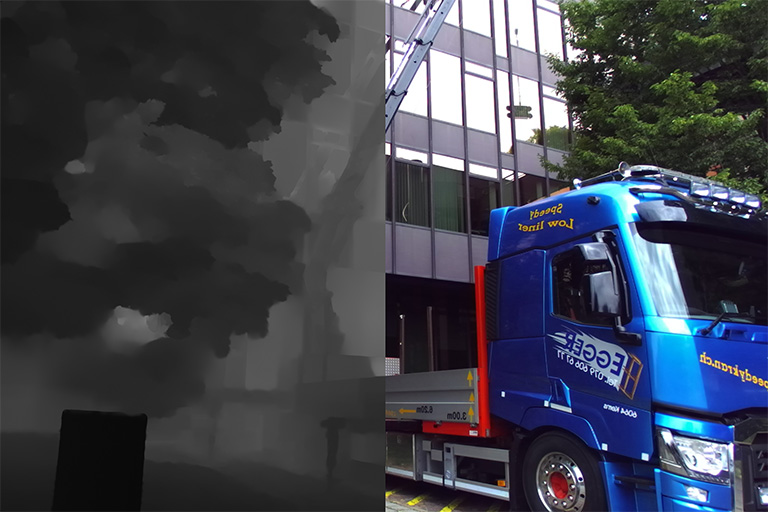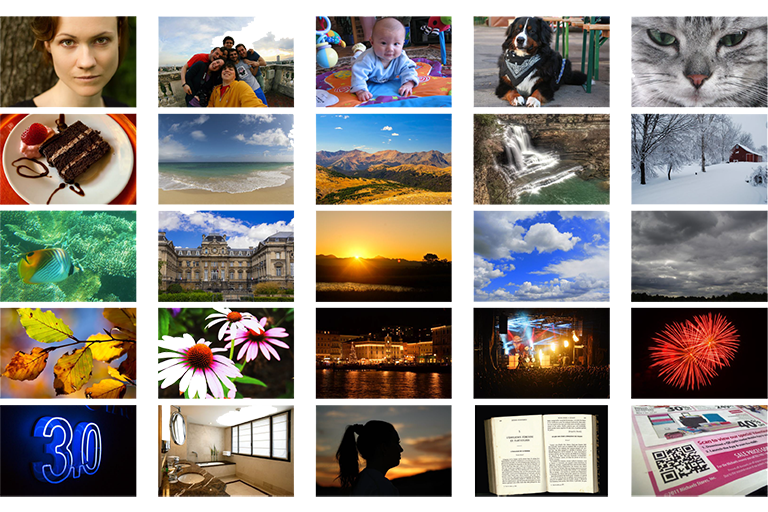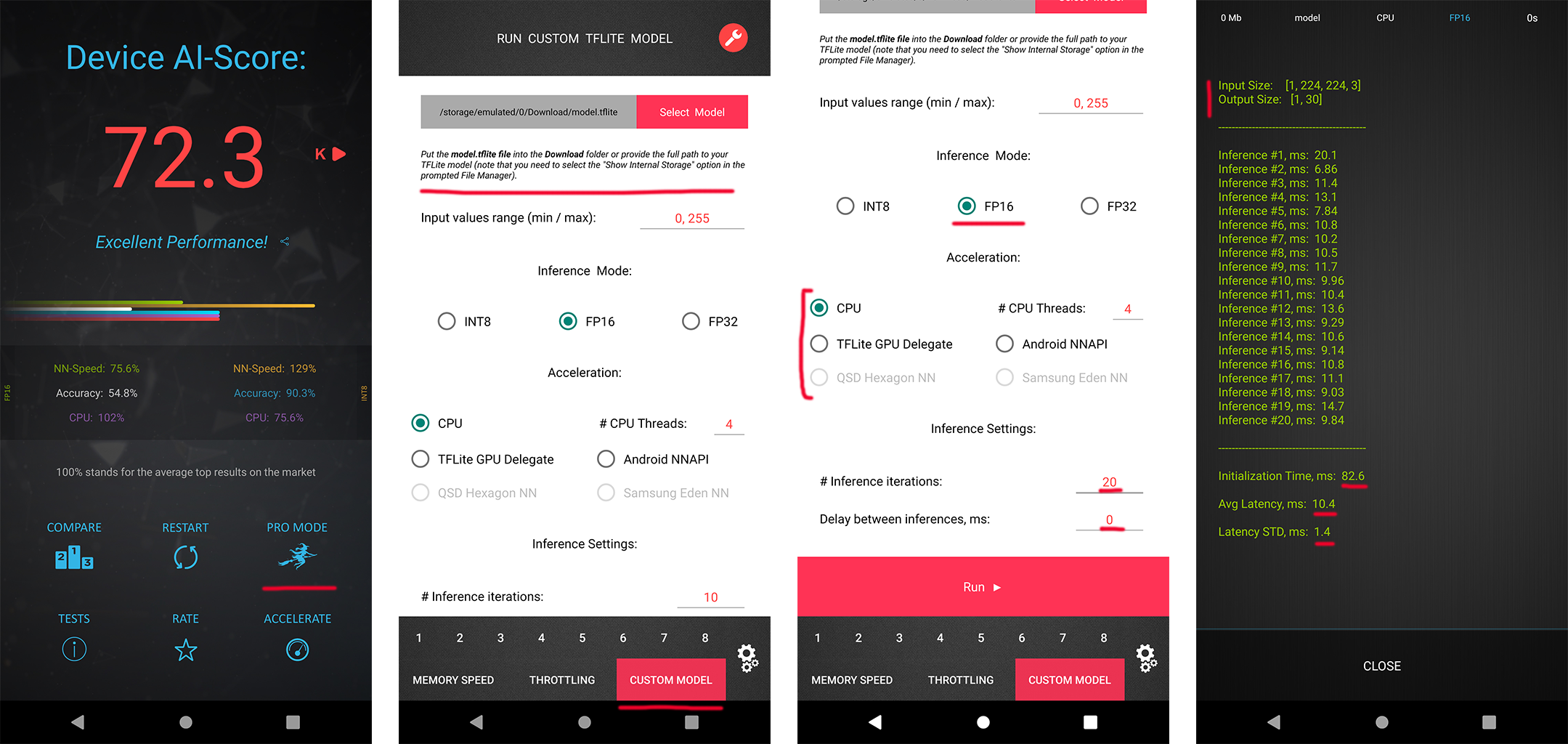Computer Vision Laboratory, ETH Zurich
Switzerland, 2024

Over the past years, mobile AI-based applications are becoming more and more ubiquitous. Various deep learning models can now be found on any mobile device, starting from smartphones running portrait segmentation, image enhancement, face recognition and natural language processing models, to smart-TV boards coming with sophisticated image super-resolution algorithms. The performance of mobile NPUs and DSPs is also increasing dramatically, making it possible to run complex deep learning models and to achieve fast runtime in the majority of tasks.
While many research works targeted at efficient deep learning models have been proposed recently, the evaluation of the obtained solutions is usually happening on desktop CPUs and GPUs, making it nearly impossible to estimate the actual inference time and memory consumption on real mobile hardware. To address this problem, we introduce the first Mobile AI Workshop, where all deep learning solutions are developed for and evaluated on mobile devices.
Due to the performance of the last-generation mobile AI hardware, the topics considered in this workshop will go beyond the simple classification tasks, and will include such challenging problems as image denoising, HDR photography, accurate depth estimation, learned image ISP pipeline, real-time image and video super-resolution. All information about the challenges, papers, invited talks and workshop industry partners is provided below.
SCHEDULE
Deep Learning on Mobile Devices: What's New in 2024?
08:30 Pacific Time ┈ Andrey Ignatov ┈ AI Benchmark Project Lead, ETH Zurich
Abstract: In this tutorial, we will review the recent Android AI software stack updates, and will talk about the performance of the latest mobile chipsets from Qualcomm, MediaTek, Google, Samsung and Unisoc released during the past year. We will also discuss the power efficiency of mobile chipsets and their NPUs, and will analyze their energy consumption for a number of typical AI workloads.
09:00 Pacific Time Accepted Paper Presentations and Discussions
PREVIOUS CHALLENGES (2022)
Video Super-Resolution

 | Evaluation Platform: MediaTek Dimensity APU |
| Powered by: |  |
Image Super-Resolution

 | Evaluation Platform: Synaptics Dolphin NPU |
| Powered by: |  |
Learned Smartphone ISP

 | Evaluation Platform: Snapdragon Adreno GPU |
| Powered by: |  |
Bokeh Effect Rendering

 | Evaluation Platform: Arm Mali GPU |
| Powered by: |  |
Depth Estimation

 | Evaluation Platform: Raspberry Pi 4 |
| Powered by: |  |
PREVIOUS CHALLENGES (2021)
Learned Smartphone ISP

 | Evaluation Platform: MediaTek Dimensity APU |
| Powered by: |  |
Image Denoising

 | Evaluation Platform: Exynos Mali GPU |
| Powered by: |  |
Image Super-Resolution

 | Evaluation Platform: Synaptics Dolphin NPU |
| Powered by: |  |
Video Super-Resolution

 | Evaluation Platform: Snapdragon Adreno GPU |
| Powered by: |  |
Depth Estimation

 | Evaluation Platform: Raspberry Pi 4 |
| Powered by: |  |
Camera Scene Detection

 | Evaluation Platform: Apple Bionic |
| Powered by: |  |
CALL FOR PAPERS
Being a part of CVPR 2024, we invite the authors to submit high-quality original papers proposing various machine learning based solutions for mobile, embedded and IoT platforms. The topics of interest cover all major aspects of AI and deep learning research for mobile devices including, but not limited to:
• Efficient deep learning models for mobile devices |
• Image / video super-resolution on low-power hardware |
• General smartphone photo and video enhancement |
• Deep learning applications for mobile camera ISPs |
• Fast image classification / object detection algorithms |
• Real-time semantic image segmentation |
• Image or sensor based identity recognition |
• Activity recognition using smartphone sensors |
• Depth estimation w/o multiple cameras |
• Portrait segmentation / bokeh effect rendering |
• Perceptual image manipulation on mobile devices |
• NLP models optimized for mobile inference |
• Artifacts removal from mobile photos / videos |
• RAW image and video processing |
• Low-power machine learning inference |
• Machine and deep learning frameworks for mobile devices |
• AI performance evaluation of mobile and IoT hardware |
• Industry-driven applications related to the above problems |
To ensure high quality of the accepted papers, all submissions will be evaluated by research and industry experts from the corresponding fields. All accepted workshop papers will be published in the CVPR 2024 Workshop Proceedings by Computer Vision Foundation Open Access and IEEE Xplore Digital Library. The authors of the best selected papers will be invited to present their work during the actual workshop event at CVPR 2024. The detailed submission instructions and guidelines can be found here.
SUBMISSION DETAILS
| Format and paper length | A paper submission has to be in English, in pdf format, and at most 8 pages (excluding references) in double column. The paper format must follow the same guidelines as for all CVPR 2024 submissions: https://cvpr.thecvf.com/Conferences/2024/AuthorGuidelines |
| Author kit | The author kit provides a LaTeX2e template for paper submissions. Please refer to this kit for detailed formatting instructions: https://github.com/cvpr-org/author-kit/releases/tag/CVPR2024-v2 |
| Double-blind review policy | The review process is double blind. Authors do not know the names of the chair / reviewers of their papers. Reviewers do not know the names of the authors. |
| Dual submission policy | Dual submission is allowed with CVPR2024 main conference only. If a paper is submitted also to CVPR and accepted, the paper cannot be published both at the CVPR and the workshop. |
| Proceedings | Accepted and presented papers will be published after the conference in CVPR Workshops proceedings together with the CVPR 2024 main conference papers. |
| Submission site | https://cmt3.research.microsoft.com/MAI2024 |
TIMELINE
| Workshop Event | Date [ 5pm Pacific Time, 2024 ] |
|---|---|
| Website online | January 25 |
| Paper submission server online | February 13 |
| Paper submission deadline [early submission] | March 10 |
| Paper decision notification [early submission] | March 25 |
| Paper submission deadline [late submission] | April 5 |
| Paper decision notification [late submission] | April 8 |
| Camera ready deadline | April 11 |
| Workshop day | June 17 |
DEEP LEARNING ON MOBILE DEVICES: TUTORIAL
Have some questions? Leave them on the AI Benchmark Forum
RUNTIME VALIDATION
In each MAI 2024 challenge track, the participants have a possibility to check the runtime of their solutions remotely on the target platforms. For this, the converted TensorFlow Lite models should be uploaded to a special web-server, and their runtime on the actual target devices will be returned instantaneously or withing 24 hours, depending on the track. The detailed model conversion instructions and links can be found in the corresponding challenges. Besides that, we strongly encourage the participants to check the speed and RAM consumption of the obtained models locally on your own Android devices. This will allow you to perform model profiling and debugging faster and much more efficiently. To do this, one can use AI Benchmark application allowing you to load a custom TFLite model and run it with various acceleration options, including CPU, GPU, DSP and NPU: 1. Download AI Benchmark from the Google Play / website and run its standard tests. 2. After the end of the tests, enter the PRO Mode and select the Custom Model tab there. 3. Rename the exported TFLite model to model.tflite and put it into the Download folder of your device. 4. Select your mode type, the desired acceleration / inference options and run the model. You can find the screenshots demonstrating these 4 steps below:

CONTACTS
 |
Computer Vision Lab ETH Zurich, Switzerland andrey@vision.ee.ethz.ch |
 |
Computer Vision Laboratory University of Würzburg, Germany radu.timofte@uni-wuerzburg.de |
Computer Vision Laboratory, ETH Zurich
Switzerland, 2024